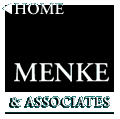
 |
|
| ESOP and Philanthropy | |
INDEX: 1. Overview 2. Recent Tax Law Changes 3. Benefits for Private Owners
4. Case Studies
C corporations have been permitted to install ESOPs since the original ESOP legislation was enacted in 1974. Prior to 1996, however, ESOPs were not permitted to own S corporation stock. The irony of this situation is that tax reforms enacted in 1986 contributed substantially to the proliferation of S corporations. The 1996 legislation resolved the "ownership" issue, but it created a substantial tax liability connected to the income attributed to the ownership of such stock by an ESOP. The 1996 act treated such income as Unrelated Business Income Taxable (UBIT). The Taxpayer Relief Act of 1997 (TRA '97) corrected this situation. Effective for tax years beginning after December 31, 1997, the TRA '97 amends the Internal Revenue Code so as to exempt S corporation ESOPs from the payment of corporate or personal tax on the ESOP's share of the profits.
The implication for charitable institutions is that stock of an S corporation can now be safely conveyed to a charity without fear that such a gift will trigger tax liability to the charity in question.
Notwithstanding the improvements effected by the '97 legislation, we would like to point out that there are still some tax related benefits inuring to C corporations from which S corporations are still excluded:
The tax-free rollover provision is more fully explained in a subsequent section of this pamphlet entitled TAX AND FINANCIAL INCENTIVES FOR C CORPORATIONS. In summary, however, sales of stock to an ESOP in an S corporation do not qualify for tax-deferred treatment.
Even if the company maintains a leveraged loan incurred while it was a C corporation, its change to S status will limit its deduction for plan contributions including interest to 15% of covered compensation unless it adopts a "Money Purchase ESOP."
If the company has been accelerating its amortization of a securities acquisition loan by paying down principal with "deductible dividends" under 404(k), this will no longer be possible if the company changes to S status.
Notwithstanding all of this, however, there may be substantial countervening advantages in operating tax free as a 100% ESOP owned company. We would strongly recommend, however, that any such situation would have to be evaluated by appropriately qualified advisors in order to insure the best course of action for the corporation and its owners.
Index |